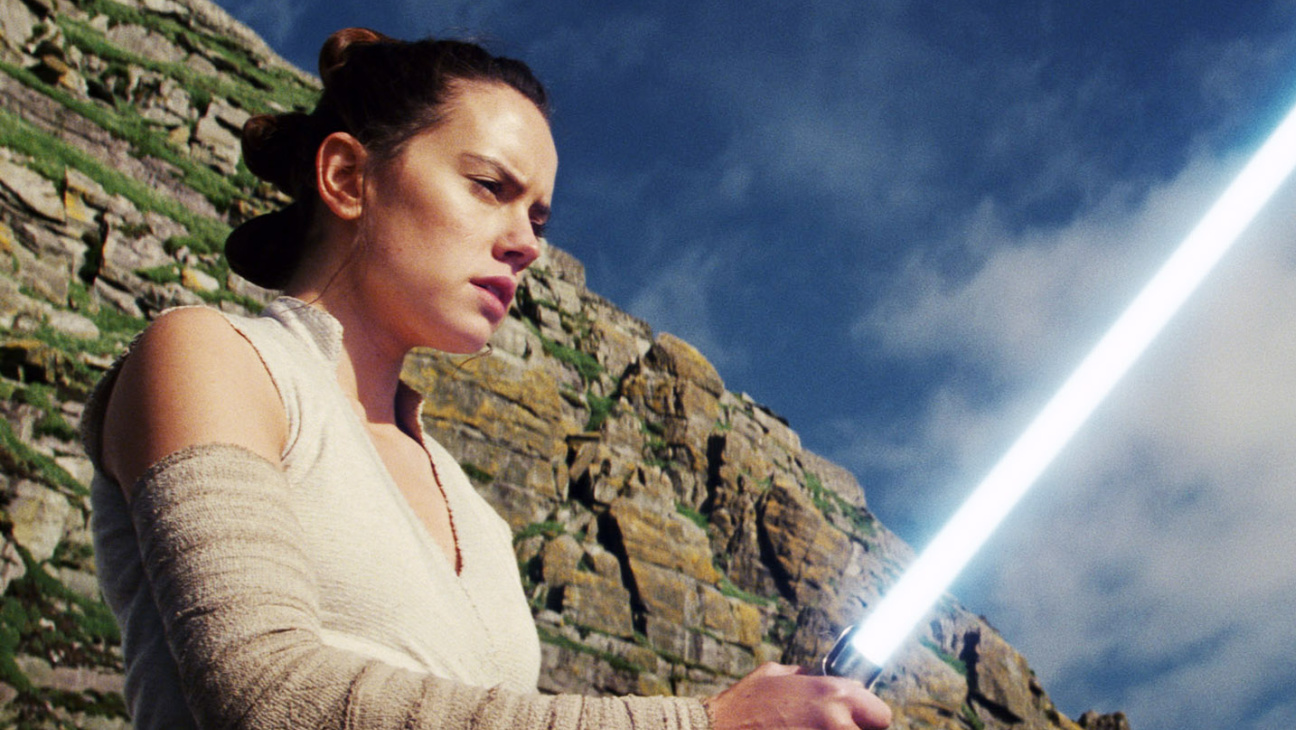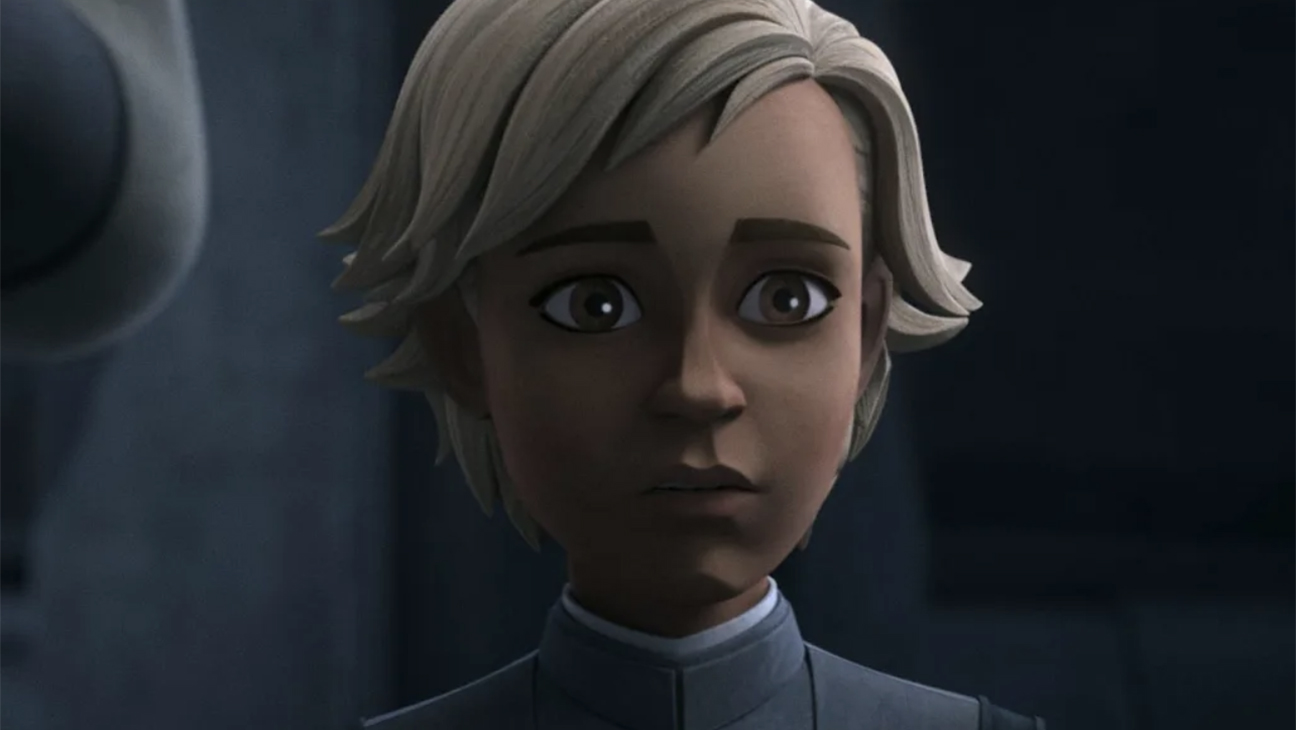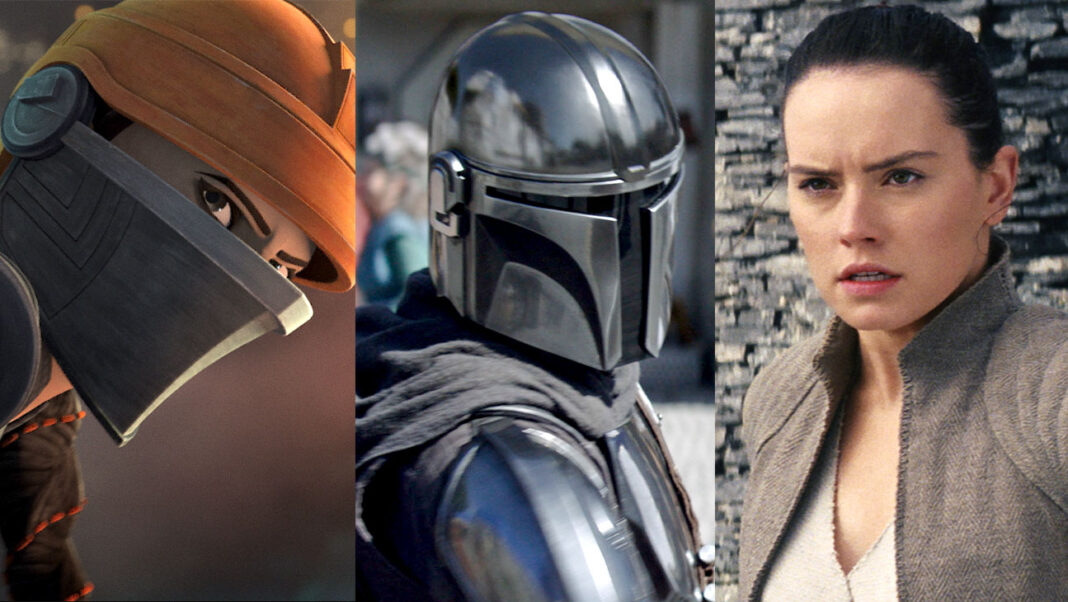Lightsabers ignite, the Force flows, and the galaxy far, far away beckons once more. The Star Wars universe, a sprawling saga of heroes, villains, and epic battles, has captivated audiences for generations. But with a multitude of films, television shows, and spin-offs, keeping track of this vast narrative can feel like navigating an asteroid field. Fear not, Jedi and Padawans alike! The Hollywood Reporter has meticulously assembled a comprehensive timeline of every Star Wars movie and TV show, a navigational map through the highs and lows of this iconic franchise.

From Blockbusters to Binge-Watching: The Evolution of Star Wars

The Star Wars franchise has undergone significant transformations over the years, shifting from its early emphasis on big-screen spectacle to the current era of television dominance. This evolution has had a profound impact on the franchise’s growth and expansion, leading to increased popularity and a broader audience reach.
The Rise of Theatrical Dominance
For over two decades, Star Wars was primarily known for its theatrically released blockbusters. Despite occasional forays into television, the franchise remained largely committed to the big screen. This strategy allowed Star Wars to establish a strong presence in the film industry, with each new installment generating immense excitement and anticipation among fans.
However, this approach also had its limitations. The rapid release of new films, often with limited time between each installment, created a sense of fatigue among fans. The need for continuous innovation and freshness in storytelling became increasingly challenging, leading to a decline in quality and a sense of stagnation within the franchise.
A Shift in Focus: The Rise of Television
The introduction of animated series Star Wars: The Clone Wars in the 2000s marked a significant turning point in the franchise’s evolution. This move towards television allowed for a more nuanced and detailed exploration of the Star Wars universe, with each episode providing a unique perspective on the characters and their experiences.
The Clone Wars’ success paved the way for further television expansion, with the launch of live-action series such as The Mandalorian and The Book of Boba Fett on Disney+. This shift towards television has enabled the franchise to explore new storylines, characters, and themes, while also providing a more intimate and immersive experience for fans.
Disney’s Acquisition and the Television Explosion
The acquisition of Lucasfilm by Disney in 2012 marked a new era for the Star Wars franchise. Under Disney’s ownership, the franchise has experienced an unprecedented surge in production, with a steady stream of new films and television shows being released over the past decade.
This increased output has enabled the franchise to reach a broader audience, with Disney+ becoming a hub for Star Wars content. The platform’s subscription-based model has provided fans with access to a vast library of exclusive content, including new films, television shows, and behind-the-scenes materials.
The success of Disney’s Star Wars strategy has been remarkable, with the franchise generating billions of dollars in revenue and cementing its position as one of the most beloved and enduring franchises in popular culture.
Mapping the Cinematic Saga: A Chronological Guide to Star Wars Films
The Star Wars saga is a complex and interconnected web of stories, with each film building upon the last to create a rich and immersive narrative. This section provides an in-depth guide to the Star Wars films, highlighting key turning points and character arcs that have defined the franchise.
The Skywalker Saga
The Skywalker Saga is the central narrative thread of the Star Wars franchise, focusing on the adventures of the iconic Skywalker family. The saga consists of nine mainline films, each of which contributes to the overall story arc of the franchise.
- Episode IV: A New Hope (1977) – The original Star Wars film, introducing audiences to the heroes of the Rebel Alliance and the villainous Empire.
- Episode V: The Empire Strikes Back (1980) – The sequel to A New Hope, exploring the complexities of the Force and the personal struggles of the characters.
- Episode VI: Return of the Jedi (1983) – The final installment of the original trilogy, concluding the Skywalker Saga’s narrative arc.
- Episode I: The Phantom Menace (1999) – The prequel to the original trilogy, introducing the galaxy of the Star Wars universe and the rise of Anakin Skywalker.
- Episode II: Attack of the Clones (2002) – The second prequel, exploring the Clone Wars and the growing conflict between the Jedi and the Sith.
- Episode III: Revenge of the Sith (2005) – The final prequel, concluding the Skywalker Saga’s origin story and setting the stage for the original trilogy.
- Episode VII: The Force Awakens (2015) – The first installment of the sequel trilogy, reintroducing the Skywalker name and exploring the legacy of the original trilogy.
- Episode VIII: The Last Jedi (2017) – The second installment of the sequel trilogy, delving deeper into the themes of identity and legacy.
- Episode IX: The Rise of Skywalker (2019) – The final installment of the sequel trilogy, concluding the Skywalker Saga’s narrative arc and providing a sense of closure for the franchise.
- Rogue One: A Star Wars Story (2016) – A prequel to A New Hope, focusing on the Rebel Alliance’s efforts to obtain the Death Star plans.
- Solo: A Star Wars Story (2018) – A prequel to A New Hope, exploring the early life of Han Solo and his adventures as a young smuggler.
Anthology Films
The anthology films of the Star Wars franchise offer standalone stories within the universe, exploring unique characters and themes. These films provide a fresh perspective on the galaxy, often serving as a complement to the Skywalker Saga.
Cross-Media Connections: Identifying and Analyzing How Films Influence and Reflect the Broader Star Wars Universe
One of the most significant aspects of the Star Wars franchise is its vast and interconnected media universe. With numerous films, television shows, and other media forms, it can be challenging to keep track of the various storylines, characters, and themes. In this section, we will explore the cross-media connections within the Star Wars universe, analyzing how films influence and reflect the broader Star Wars universe.
The Star Wars franchise has always been known for its richly detailed and immersive universe. From the original trilogy to the prequels, sequels, and spin-offs, each film has contributed to the overall narrative and expanded the universe in meaningful ways. However, with the rise of television and other media forms, the Star Wars universe has become even more complex and interconnected.
Take, for example, the character of Ahsoka Tano. Introduced in the animated series Star Wars: The Clone Wars, Ahsoka has since become a central character in the Star Wars universe, appearing in multiple films, television shows, and other media forms. Her story has been influenced by various films and television shows, including The Mandalorian and Rebels, demonstrating the cross-media connections that exist within the franchise.
The Influence of Television on the Star Wars Universe
Television has played a significant role in shaping the Star Wars universe, particularly in recent years. With the launch of Disney+, the streaming platform has become a hub for Star Wars content, with multiple series and films available to viewers. The Mandalorian, Obi-Wan Kenobi, and Andor are just a few examples of the successful television shows that have expanded the Star Wars universe.
The success of these shows can be attributed to their ability to explore new storylines and characters while still remaining true to the spirit of the franchise. The Mandalorian, for example, has introduced a new character in Din Djarin, a bounty hunter who becomes the protector of “The Child” (also known as Baby Yoda). This show has become a fan favorite, with its unique blend of action, adventure, and humor.
Obi-Wan Kenobi, on the other hand, has explored the character of Obi-Wan Kenobi in a more intimate setting, focusing on his relationship with the young Luke Skywalker. This show has provided a deeper understanding of Obi-Wan’s character and his role in the larger Star Wars universe.
The Influence of Films on the Star Wars Universe
Films have also played a significant role in shaping the Star Wars universe. The original trilogy, in particular, has had a lasting impact on the franchise, introducing iconic characters and storylines that have become synonymous with the Star Wars brand.
The prequels, on the other hand, have expanded the universe in meaningful ways, introducing new characters and storylines that have enriched the franchise. The sequels, while divisive, have continued to explore new themes and ideas, further expanding the Star Wars universe.
The influence of films on the Star Wars universe can be seen in the way that they have influenced other media forms, such as television shows and video games. The success of films like The Force Awakens and The Last Jedi has paved the way for other media forms to explore new storylines and characters, further expanding the Star Wars universe.
The Small Screen Strikes Back: A Deep Dive into Star Wars Television
Star Wars television has become a staple of the franchise, with numerous series and films available to viewers. In this section, we will explore the impact of Star Wars television on the franchise, examining the popularity and impact of series like The Mandalorian, Obi-Wan Kenobi, and Andor.
Live-Action Adventures: The Rise of The Mandalorian
The Mandalorian has been a game-changer for Star Wars television, introducing a new character and storylines that have captivated audiences worldwide. The show’s success can be attributed to its unique blend of action, adventure, and humor, as well as its ability to explore new themes and ideas within the Star Wars universe.
The show’s popularity has been fueled by its use of new and innovative technology, including the use of virtual production and practical effects. The show’s creators have also made use of the Star Wars universe’s richly detailed lore, drawing inspiration from the franchise’s iconic characters, planets, and vehicles.
Animated Explorations: The Legacy of The Clone Wars and Rebels
The Clone Wars and Rebels have been two of the most successful animated series in the Star Wars franchise, providing a deeper understanding of the universe and its characters. The Clone Wars, in particular, has been praised for its complex and engaging storylines, as well as its ability to explore the moral complexities of war.
Rebels, on the other hand, has been praised for its unique blend of action, adventure, and humor, as well as its ability to explore new themes and ideas within the Star Wars universe. The show’s use of new and innovative animation techniques has also been praised, providing a fresh and exciting visual style for the franchise.
Future Visions: Speculating on Upcoming Television Projects
The future of Star Wars television is looking bright, with several new series and films in development. The Acolyte, a new series set in the High Republic era, is one of the most highly anticipated projects, promising to explore new themes and ideas within the Star Wars universe.
The series is being developed by Leslye Headland, a renowned writer and producer, who has stated that the series will explore the mysteries of the Force and the history of the Jedi Order. The series is expected to premiere in 2025, with a release date yet to be announced.
The Business of a Galaxy Far, Far Away: The Impact of Star Wars on Hollywood
The Star Wars franchise has had a significant impact on the film industry, shaping the way that movies are made and marketed. In this section, we will explore the business side of the franchise, discussing the challenges of maintaining audience interest with an ever-expanding Star Wars universe.
Franchise Fatigue: The Challenges of Maintaining Audience Interest
One of the biggest challenges facing the Star Wars franchise is franchise fatigue. With the release of multiple films and television shows in recent years, some fans have begun to feel overwhelmed by the sheer volume of content.
This has led to a decrease in interest and engagement from some fans, who may feel that the franchise is becoming too formulaic and predictable. To combat this, the franchise has had to adapt and evolve, introducing new characters, storylines, and themes to keep the franchise fresh and exciting.
Merchandising and Global Domination: The Commercial Success of Star Wars
The Star Wars franchise has been a commercial success, with a vast and dedicated fan base driving sales of merchandise, tickets, and home entertainment releases. The franchise has become a global phenomenon, with a presence in over 160 countries and a estimated value of over $70 billion.
The franchise’s commercial success has been fueled by its ability to adapt and evolve, introducing new characters, storylines, and themes to keep the franchise fresh and exciting. The franchise has also made use of new and innovative marketing techniques, including social media and online advertising.
Cultural Legacy: The Enduring Impact of Star Wars on Popular Culture
The Star Wars franchise has had a lasting impact on popular culture, influencing the way that we tell stories, create characters, and design worlds. The franchise’s iconic characters, planets, and vehicles have become a part of our shared cultural heritage, inspiring countless works of art, music, and literature.
The franchise’s influence can be seen in the way that it has inspired new generations of fans and creators, providing a rich and detailed universe that is full of possibilities and opportunities. The franchise’s cultural legacy will continue to be felt for generations to come, shaping the way that we think about and interact with the world around us.
Conclusion
In conclusion, the Star Wars franchise has evolved into a sprawling, interconnected narrative that spans decades, mediums, and galaxies. From the original trilogy to the latest Disney+ series, our comprehensive timeline has mapped out the chronology of this beloved universe, highlighting the complex relationships between films and shows. We’ve explored the prequels, the sequel trilogy, and the anthological stories that enrich our understanding of the Star Wars cosmos.
The significance of this franchise extends beyond its entertainment value, as it has become a cultural touchstone, influencing countless aspects of modern pop culture. The impact of Star Wars is palpable in film, television, literature, and even technology. As the franchise continues to expand, it’s clear that its influence will only grow, shaping the future of storytelling and beyond. With new projects on the horizon, including the upcoming Obi-Wan Kenobi series and the mysterious Star Wars: Rangers of the New Republic, fans can expect even more exciting developments in the years to come.
As we reflect on the vast expanse of the Star Wars universe, we’re reminded that, at its core, this franchise is about the power of storytelling to transport us, to inspire us, and to challenge us. As we move forward into a future filled with uncertainty, the timeless themes of hope, redemption, and the struggle between light and darkness will continue to resonate with audiences around the world. In the end, the true magic of Star Wars lies not in its iconic characters or groundbreaking special effects, but in its ability to spark our imagination, to fuel our creativity, and to inspire us to become the heroes we need.
